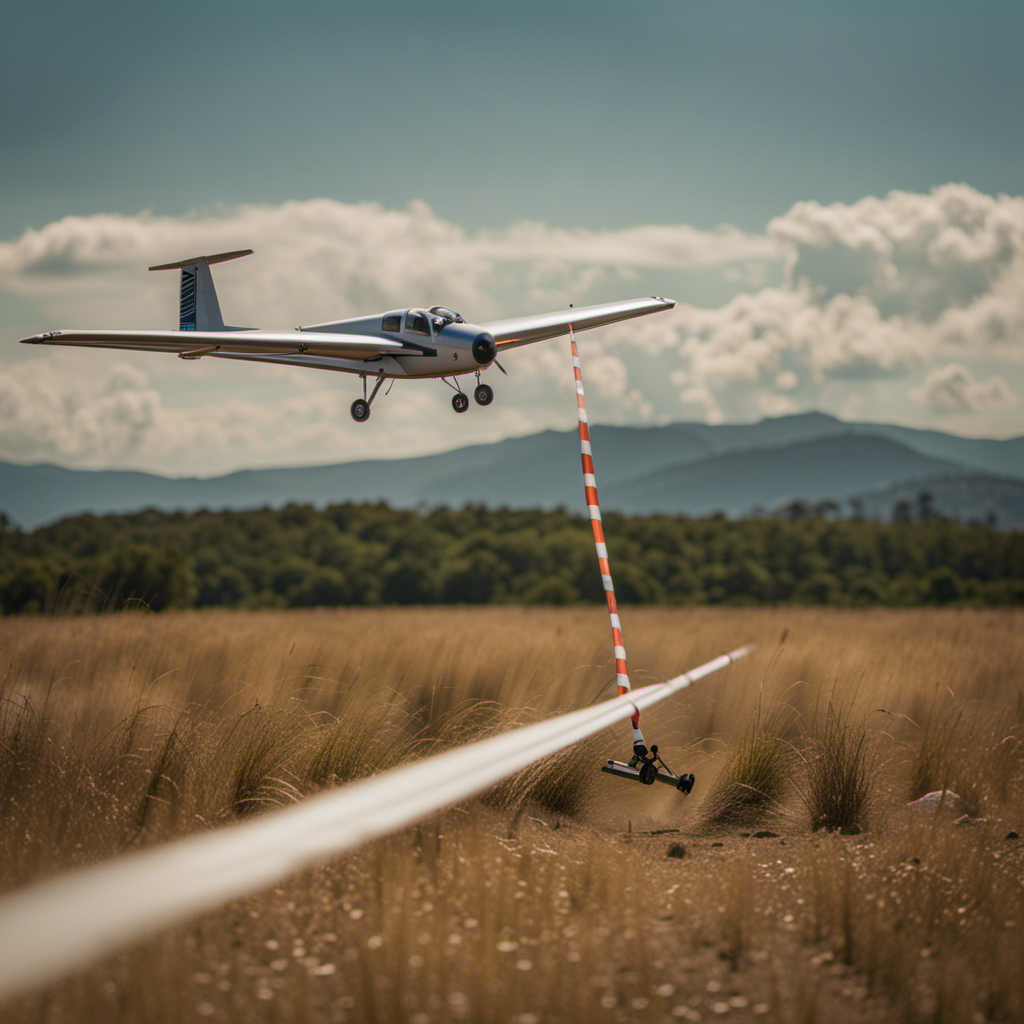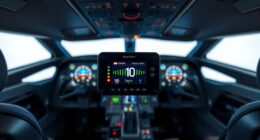Are you ready to take flight? If so, you may be considering if investing in a motor glider is worth it.
Well, buckle up and get ready for a thorough exploration of motor glider prices. We’ll dive into the components that determine the cost, compare owning versus renting, analyze resale value, evaluate performance and efficiency, explore potential uses and benefits, assess safety and insurance factors, and hear from owners and enthusiasts.
By the end, you’ll have all the data you need to make an informed decision.
Let’s soar into the world of motor gliders!
Key Takeaways
- Motor gliders offer long-term benefits and versatility with their ability to take off and land from any suitable runway, eliminating the need for additional equipment like a tow plane or winch.
- Motor gliders provide a greater range compared to sailplanes, allowing for cross-country flights and more travel options, expanding the range of potential destinations.
- Motor gliders are cost-effective due to their fuel-efficient operation, leading to lower fuel consumption and overall maintenance costs, as well as reduced environmental impact.
- Owning a motor glider provides the joy of soaring silently, experiencing the tranquility of silent flight and the freedom to enjoy the beauty of nature from above, offering unique and unforgettable flying experiences.
Understanding the Components of a Motor Glider
You’ll find it helpful to understand the components of a motor glider before deciding if it’s worth the investment.
A motor glider consists of several key parts that work together to enable flight. The most important component is the engine, which provides the power needed for both takeoff and cruising.
The wings, fuselage, and tail are also crucial elements that contribute to the glider’s stability and maneuverability.
In addition, motor gliders are equipped with advanced avionics systems that assist pilots in navigation and communication. Understanding these components is essential because they directly affect the performance and safety of the aircraft.
Once you grasp the intricacies of a motor glider’s design, you can better evaluate the factors that determine its price, such as the engine type, materials used, and additional features.
Factors That Determine Motor Glider Prices
When determining the cost of a motor glider, there are various factors that come into play. These factors include brand, features, condition, market demand, and location.
Different brands have different price ranges based on their reputation and quality. Motor gliders with advanced features like autopilot or upgraded avionics tend to be pricier. The condition of the motor glider, including its age and maintenance history, affects its price. The demand for motor gliders can influence their prices, with higher demand driving prices up. Additionally, the cost of a motor glider can vary depending on the location and local market conditions.
Considering these factors will help you make an informed decision when it comes to purchasing a motor glider. Now, let’s explore the cost comparison between owning and renting a motor glider.
Comparing the Cost of Owning vs. Renting a Motor Glider
To determine whether owning or renting a motor glider is more cost-effective, consider factors such as frequency of use and associated maintenance expenses.
Owning a motor glider requires a significant upfront investment, including the purchase price and ongoing maintenance costs. However, if you plan to use the motor glider frequently, the cost of renting can quickly add up.
On the other hand, if you only plan to use the motor glider occasionally, renting may be a more affordable option. Additionally, owning a motor glider gives you the freedom and flexibility to use it whenever you want, without having to worry about availability or scheduling conflicts.
Now, let’s move on to analyzing the resale value of motor gliders.
Analyzing the Resale Value of Motor Gliders
If you’re considering selling your motor glider, it’s important to research current market trends and compare similar models to determine their resale value. To help you in this process, here are some key factors to consider:
-
Age and condition: The age and overall condition of your motor glider will significantly impact its resale value. Buyers are generally willing to pay more for newer models in good condition.
-
Equipment and features: Motor gliders with advanced avionics, autopilot systems, and other desirable features tend to command higher prices in the resale market.
-
Maintenance history: Keeping detailed records of maintenance and repairs can increase the value of your motor glider. Buyers want to know that the aircraft has been well-maintained and is in good working order.
Evaluating the Performance and Efficiency of Motor Gliders
Once you have gathered information on the age, condition, equipment, and maintenance history of your motor glider, you can assess its performance and efficiency.
To evaluate the performance, you need to consider the glider’s maximum speed, climb rate, and fuel consumption. These factors will give you an idea of how well the glider performs in terms of speed and fuel efficiency.
Additionally, you should also analyze its glide ratio, which determines how far the glider can glide without an engine. This information is crucial for understanding its efficiency in terms of range and endurance.
Considering the Maintenance and Operating Costs
Analyzing the maintenance and operating costs is essential when deciding whether the motor glider is a worthwhile investment. To help you make an informed decision, consider the following key points:
- Maintenance: Motor gliders require regular inspections and servicing to ensure optimal performance and safety. These maintenance costs can add up over time.
- Fuel Consumption: Motor gliders consume less fuel compared to traditional aircraft, resulting in lower operating costs.
- Insurance: It is important to factor in the cost of insurance coverage for your motor glider, as it can vary depending on factors such as pilot experience and intended usage.
- Storage and Hangar Fees: Consider the expenses associated with storing your motor glider, including hangar fees, as they can vary depending on location.
By carefully evaluating these maintenance and operating costs, you can determine if the motor glider is a financially viable investment.
Now, let’s explore the potential uses and benefits of motor gliders.
Exploring the Potential Uses and Benefits of Motor Gliders
To fully understand the potential uses and benefits of motor gliders, you should consider the various ways they can enhance your flying experience.
Motor gliders offer the unique ability to switch between gliding and powered flight, providing flexibility and versatility in different flying conditions.
With their efficient engines and aerodynamic designs, motor gliders can cover long distances with reduced fuel consumption, making them a cost-effective option for cross-country flights.
In addition, motor gliders allow pilots to explore new areas and reach remote destinations that may be inaccessible with traditional gliders.
They also provide an opportunity for pilots to improve their skills in thermalling and soaring, as well as practicing engine-out procedures.
Transitioning to the next section, it is important to assess the safety and insurance factors when considering the investment in a motor glider.
Assessing the Safety and Insurance Factors
When considering the safety and insurance factors, you should consult with an experienced aviation insurance broker to ensure you have comprehensive coverage for your flying activities. Motor gliders, like any other aircraft, come with inherent risks, and having the right insurance coverage is crucial.
Aviation insurance brokers specialize in understanding the unique needs of pilots and aircraft owners, and they can provide guidance on the appropriate coverage for your motor glider. They will assess factors such as your flying experience, intended use of the aircraft, and any specific risks associated with motor gliders.
By working with an insurance broker, you can have peace of mind knowing that you are protected in the event of an accident or other unforeseen circumstances.
Now, let’s hear from motor glider owners and enthusiasts to gain more insights into the investment value of these aircraft.
Hearing from Motor Glider Owners and Enthusiasts
Let’s hear what motor glider owners and enthusiasts have to say about the value of these aircraft.
According to a survey conducted by the Motor Glider Association, the majority of owners expressed high satisfaction with their motor gliders. They praised the dual functionality of these aircraft, combining the efficiency of a glider with the convenience of a motorized plane.
In terms of cost-effectiveness, owners highlighted the fuel efficiency of motor gliders, which can significantly reduce operating expenses compared to traditional airplanes.
Additionally, enthusiasts emphasized the joy of soaring silently through the skies, enjoying breathtaking views and the freedom to explore remote areas.
Now, armed with insights from experienced owners and enthusiasts, you can make an informed decision about whether a motor glider is a worthwhile investment.
Making an Informed Decision: Is a Motor Glider a Worthwhile Investment?
You should carefully consider the long-term benefits of owning a motor glider before making a decision.
A motor glider offers a unique combination of powered flight and soaring capabilities, making it an attractive option for aviation enthusiasts.
One of the main benefits of owning a motor glider is its versatility. With a motor, you can take off and land from any suitable runway, eliminating the need for a tow plane or winch.
Additionally, motor gliders have a longer range compared to sailplanes, allowing you to explore greater distances.
Another advantage is the potential for cost savings. Motor gliders consume less fuel compared to traditional aircraft, making them more fuel-efficient and environmentally friendly.
Finally, the ability to soar without an engine can provide a thrilling and serene flying experience.
Overall, owning a motor glider can provide you with a diverse range of flying experiences and long-term benefits that make it a worthwhile investment.
Conclusion
In conclusion, investing in a motor glider can be a worthwhile decision for aviation enthusiasts. The average price of a motor glider ranges from $50,000 to $200,000, depending on various factors such as the model, features, and condition.
However, it is interesting to note that motor gliders have a high resale value, with some models retaining up to 80% of their original price after several years of use.
Additionally, owning a motor glider offers the convenience and cost-saving benefits of flying at your own leisure, rather than relying on rentals.
Furthermore, motor gliders provide an efficient and versatile flying experience, with the ability to soar through the skies using both engine power and gliding techniques.
Safety and insurance considerations are also important factors to evaluate before making a purchase.
To make an informed decision, it is beneficial to hear from current motor glider owners and enthusiasts, who can provide valuable insights and firsthand experiences.
Ultimately, considering the potential uses, benefits, and overall performance of motor gliders, it is worth exploring this unique aviation option and determining if it aligns with your flying aspirations.
Orion, better known as “Jetstream,” is the voice that brings the stories of the skies to life. His fascination with aviation began at a young age, sparked by his father’s tales of flying and adventure. Orion’s journey into the world of gliding was serendipitous, and from the moment he took his first glider flight, he knew he had found his calling.










